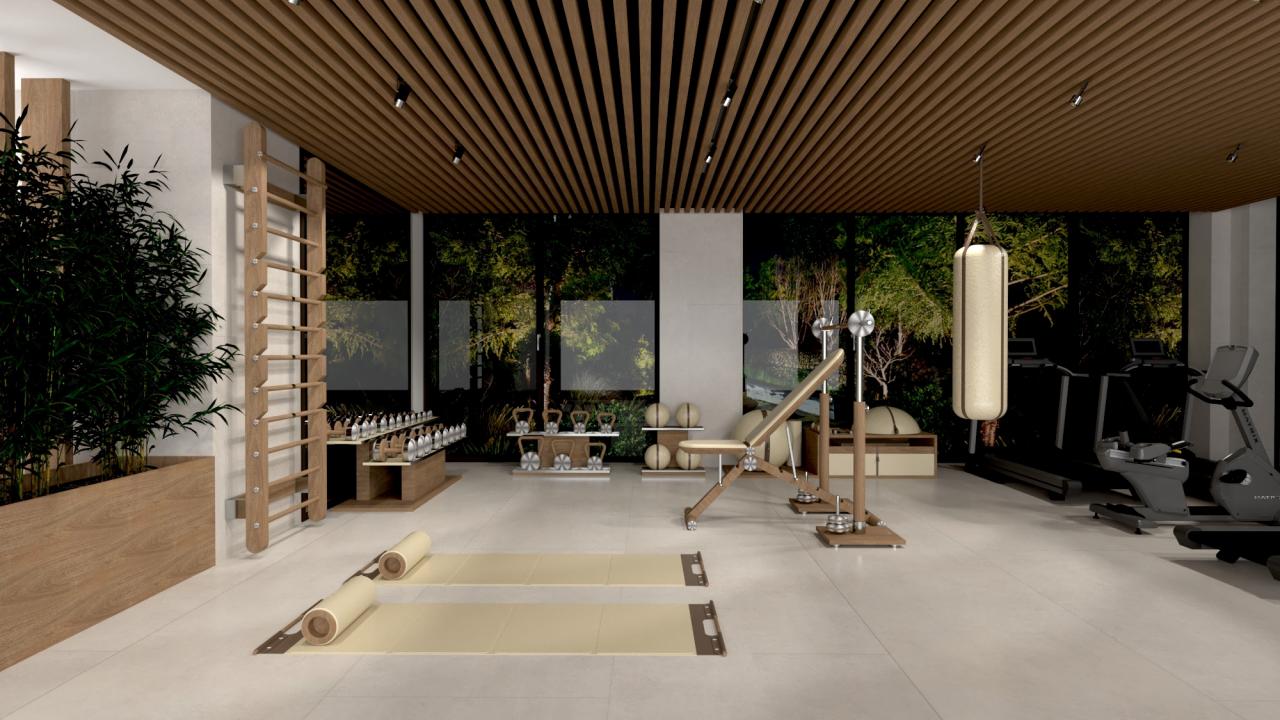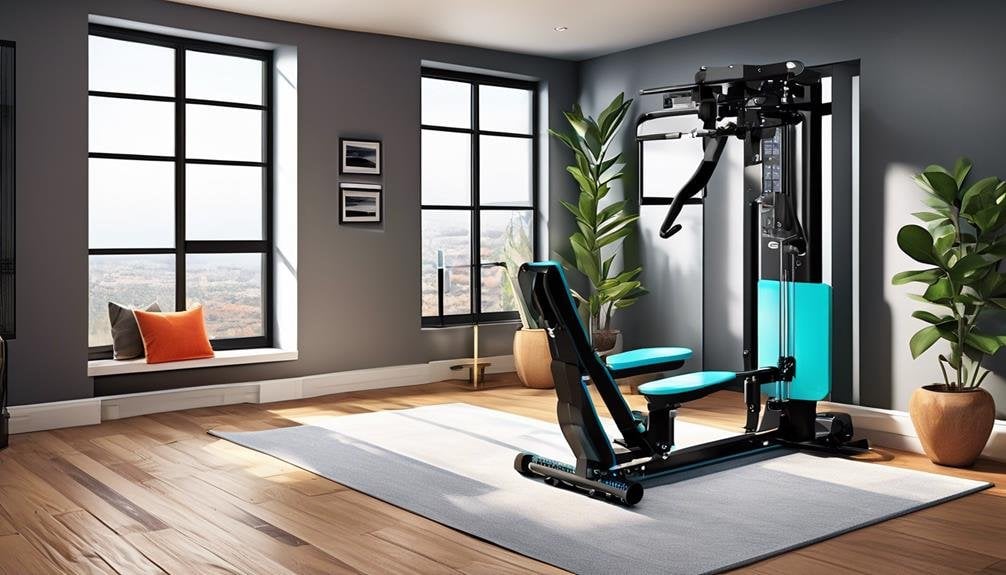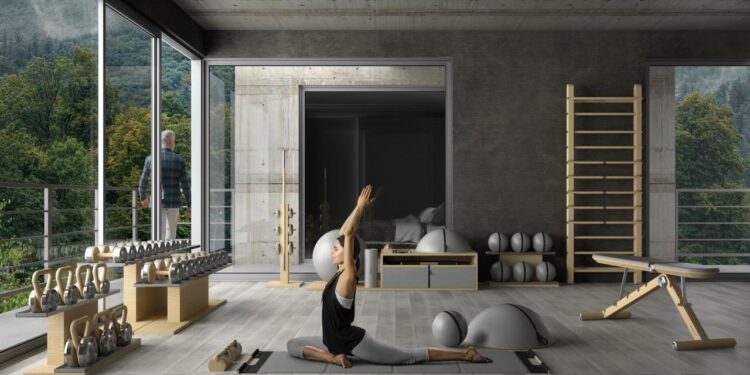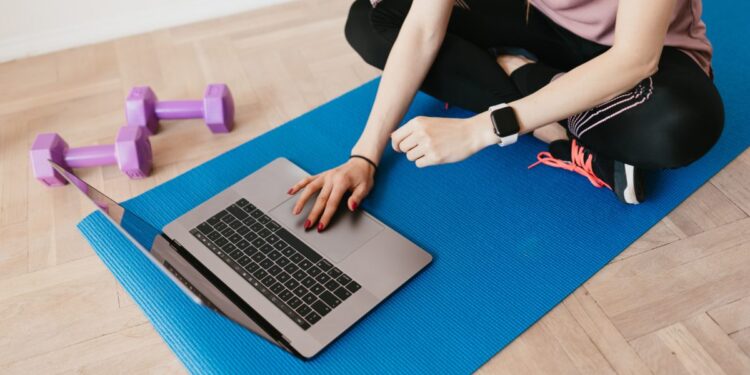In a world where time is a premium and gym memberships can be a hassle, strength training at home has emerged as a powerful and accessible alternative to traditional gym workouts. No longer limited to bulky weights and complicated machines, modern fitness is all about leveraging minimal equipment and bodyweight exercises to build muscle, increase endurance, and improve overall health. This guide is designed to empower you with the knowledge and tools to create an effective and sustainable home workout routine. Understanding the principles of strength training, the key exercises, and the strategies for consistency is your definitive guide to a stronger, healthier you, all from the comfort and convenience of your own home.
The Home Fitness Revolution

The shift towards home-based workouts isn’t just a temporary trend; it’s a permanent change driven by convenience, accessibility, and a desire for greater autonomy over one’s fitness journey. A well-designed home workout can be just as effective, if not more so, than a traditional gym routine.
A. The Compelling Case for Home Workouts
Several powerful factors make strength training at home a viable and attractive option for millions.
- Unmatched Convenience: You can work out anytime, anywhere, without the commute, the crowds, or the wait for equipment. This flexibility makes it easier to fit a workout into a busy schedule, increasing the likelihood of consistency.
- Cost-Effective: A home gym can be built with a minimal initial investment in a few key pieces of equipment, or even with no equipment at all. This is a significant saving over expensive monthly gym memberships and hidden fees.
- Privacy and Comfort: For many, the gym environment can be intimidating. Working out at home provides a private and comfortable space where you can focus on your form and your goals without the self-consciousness of a public setting.
- Time Efficiency: You can get a full workout in less time, as there’s no travel time, no waiting for machines, and no distractions. This makes a regular fitness routine much more sustainable.
- Autonomy and Personalization: You are in complete control of your workout routine. You can customize your workouts to your specific needs, goals, and fitness level, and you can adapt them as you progress.
- Consistency is Key: The biggest barrier to fitness is often consistency. The sheer convenience of a home workout makes it easier to stay on track, turning a sporadic habit into a lasting lifestyle.
B. The Core Principles of Strength Training
Regardless of where you work out, the fundamental principles of strength training remain the same. Understanding these is the key to building an effective routine.
- Progressive Overload: This is the most crucial principle. To build muscle and strength, you must progressively challenge your muscles over time. This can be done by increasing the weight, the number of repetitions, the number of sets, or by reducing rest times.
- Specificity: To improve in a specific area, you must train for it. If your goal is to get stronger legs, you must do exercises that target the legs. If your goal is to increase endurance, you must train with more repetitions and less rest.
- Rest and Recovery: Muscles grow and repair during rest. It’s crucial to give your body adequate time to recover between workouts. Overtraining can lead to injury and burnout.
- Proper Form: Proper form is essential for both effectiveness and safety. It ensures that you are targeting the correct muscles and reduces the risk of injury. It’s better to do fewer repetitions with perfect form than more repetitions with poor form.
- Consistency: Consistency is more important than intensity. A consistent, moderate workout routine is far more effective in the long run than an intense, sporadic one.
The Home Gym Tools

You don’t need a lot of space or expensive equipment to get an effective strength workout at home. A few key pieces can open up a world of possibilities, and many exercises can be done with no equipment at all.
A. Bodyweight Exercises
Before you buy any equipment, master these foundational bodyweight exercises. They are a powerful tool for building strength, stability, and endurance.
- Squats:A. Technique: Stand with your feet shoulder-width apart, back straight, and chest up. Lower your hips as if you are sitting in a chair, keeping your knees in line with your feet. Go as low as you can comfortably, then push back up to the starting position.B. Variations: To increase the difficulty, you can do pistol squats (one-legged squats), jump squats, or add a pause at the bottom of the movement.
- Push-Ups:A. Technique: Start in a plank position with your hands slightly wider than your shoulders. Lower your body until your chest nearly touches the floor, keeping your back straight and core engaged. Push back up to the starting position.B. Variations: To modify, you can do push-ups on your knees. To increase the difficulty, you can do incline push-ups (feet elevated), decline push-ups (hands elevated), or add a plyometric (clapping) component.
- Lunges:A. Technique: Stand with your feet together, then step one foot forward and lower your hips until both knees are bent at a 90-degree angle. Push off the front foot to return to the starting position and repeat on the other side.B. Variations: To increase the difficulty, you can do jumping lunges, reverse lunges, or add a twist to the movement.
- Planks:A. Technique: Start in a push-up position, but rest on your forearms. Keep your body in a straight line from your head to your heels, with your core engaged. Hold the position for as long as you can.B. Variations: To increase the difficulty, you can do side planks, planks with leg raises, or planks on an unstable surface.
- Glute Bridges:A. Technique: Lie on your back with your knees bent and feet flat on the floor. Raise your hips off the floor until your body is in a straight line from your shoulders to your knees. Hold for a moment, then lower your hips back down.B. Variations: To increase the difficulty, you can do single-leg glute bridges or add a weight to your hips.
B. Minimal Equipment
If you have a little bit of space and a small budget, these three pieces of equipment can significantly enhance your home workout routine.
- Resistance Bands:A. Versatility: Bands come in a variety of resistance levels and can be used to add resistance to almost any exercise, from squats and lunges to bicep curls and rows.B. Portability: They are small, lightweight, and easy to store, making them perfect for a home gym.
C. Safe Resistance: Bands provide a different kind of resistance than weights, which is often gentler on the joints and provides more constant tension throughout the movement.
- Dumbbells:A. Progressive Overload: Dumbbells are the most effective tool for progressive overload. You can start with a light pair and gradually increase the weight as you get stronger.B. Full-Body Workout: With dumbbells, you can get a full-body workout, targeting everything from your legs and back to your shoulders and arms.
C. Space-Saving: Adjustable dumbbells are a great space-saving option, as they combine a range of weights into a single, compact set.
- Kettlebells:A. Dynamic Movements: Kettlebells are perfect for dynamic movements like swings, snatches, and cleans, which build explosive power, strength, and endurance.B. Cardio and Strength: Kettlebell workouts often combine cardio and strength training into a single, highly effective routine.
C. Grip Strength: The unique shape of the kettlebell makes it an excellent tool for building grip strength.
C. The Home Workout Routine
A well-designed workout routine is the key to consistent progress. This template can be customized to your specific needs and goals.
- Warm-Up (5-10 minutes): Start with some light cardio (jumping jacks, high knees) and dynamic stretching (arm circles, leg swings) to get your blood flowing and prepare your muscles for the workout.
- Strength Training (20-40 minutes):A. Choose Your Exercises: Select 4-6 exercises that target different muscle groups (e.g., squats for legs, push-ups for chest, rows for back).B. Sets and Reps: Aim for 3-4 sets of 8-12 repetitions per exercise. As you get stronger, you can increase the repetitions, add more weight, or reduce your rest time.
C. Rest: Rest for 30-60 seconds between sets.
- Cool-Down (5-10 minutes): Finish with some static stretching (holding a stretch for 20-30 seconds) to improve flexibility and aid in muscle recovery.
- Frequency: Aim to strength train 2-3 times per week, with at least one day of rest between sessions to allow your muscles to recover.
The Road to Consistency
The biggest challenge with a home workout is often motivation. These strategies can help you stay on track and build a lasting habit.
A. Create a Dedicated Space
- The “Fitness Corner”: Designate a small, dedicated space for your workouts. This could be a corner of your living room, a spare bedroom, or even a small patio. This helps to create a psychological cue that it’s time to work out.
- The Essentials: Make sure your workout space has the essentials—a yoga mat, a water bottle, a towel, and any equipment you use.
- Eliminate Distractions: Put your phone on “do not disturb,” turn off the TV, and let your family know that this is your dedicated workout time.
B. Use Technology to Your Advantage
- Fitness Apps: There are countless fitness apps that offer guided workouts, personalized routines, and tracking features. Many are free or have a free trial.
- YouTube Workouts: YouTube is a treasure trove of free workout videos for every fitness level and style, from yoga and HIIT to strength training and dance.
- Smartwatches and Trackers: Use a smartwatch or a fitness tracker to monitor your progress, track your heart rate, and set goals.
- Online Communities: Join an online fitness community or a social media group for motivation, support, and accountability.
C. Set Realistic Goals and Track Your Progress
- Small, Achievable Goals: Instead of an overwhelming goal, set small, achievable ones. For example, “I will work out for 20 minutes, 3 times this week,” or “I will do 10 more push-ups by the end of the month.”
- Log Your Workouts: Keep a log of your workouts, including the exercises you did, the weight you used, and the number of repetitions. This allows you to track your progress and see how far you’ve come.
- Celebrate Milestones: Acknowledge and celebrate your milestones, no matter how small. This helps to build positive reinforcement and keeps you motivated.
- Find an Accountability Partner: Find a friend or a family member who is also working out at home. You can share your progress, motivate each other, and hold each other accountable.
The Broader Impact
The decision to start strength training at home is not just about building muscle. It’s a commitment to a healthier lifestyle that has a profound impact on your physical, mental, and emotional well-being.
A. Physical Health Benefits
- Increased Muscle Mass and Strength: Regular strength training increases muscle mass, which boosts your metabolism and helps you burn more calories at rest.
- Improved Bone Density: Strength training puts stress on your bones, which helps to increase their density and reduce the risk of osteoporosis.
- Better Body Composition: Strength training, when combined with a healthy diet, helps to reduce body fat and increase lean muscle mass.
- Improved Joint Health: Strengthening the muscles around your joints provides greater support and stability, reducing the risk of injury.
- Cardiovascular Health: Many strength training workouts, particularly those with little rest time, can also improve your cardiovascular health.
B. Mental and Emotional Benefits
- Reduced Stress and Anxiety: Exercise is a powerful tool for reducing stress and anxiety. It releases endorphins, which are natural mood elevators.
- Improved Mood and Self-Esteem: The sense of accomplishment and the physical changes from strength training can significantly improve your mood and self-esteem.
- Better Sleep: Regular exercise can improve the quality of your sleep, which is crucial for both physical and mental health.
- Increased Energy Levels: While a workout can be tiring, a consistent routine can actually boost your energy levels and help you feel more alert and focused throughout the day.
- Improved Cognitive Function: Exercise has been shown to improve cognitive function, memory, and concentration.
Conclusion
Strength Training at Home is more than just a convenient alternative to the gym; it’s a powerful and effective path to a stronger, healthier you. By understanding the core principles of progressive overload, consistency, and proper form, you can build a highly effective workout routine with no equipment or a few key pieces.
The journey to a healthier lifestyle begins with a single step, and for many, the most important step is the one they take in their own home. By creating a dedicated space, leveraging technology, and setting realistic goals, you can build a lasting habit that has a profound impact on your physical, mental, and emotional well-being. The home fitness revolution is here, and with this guide, you have everything you need to become your own personal trainer, your own motivator, and your own greatest success story.









